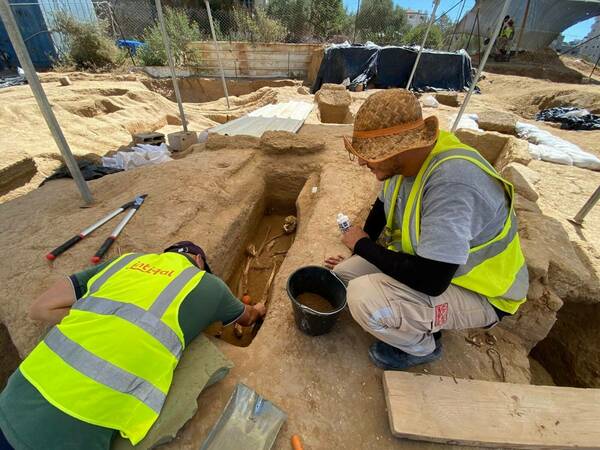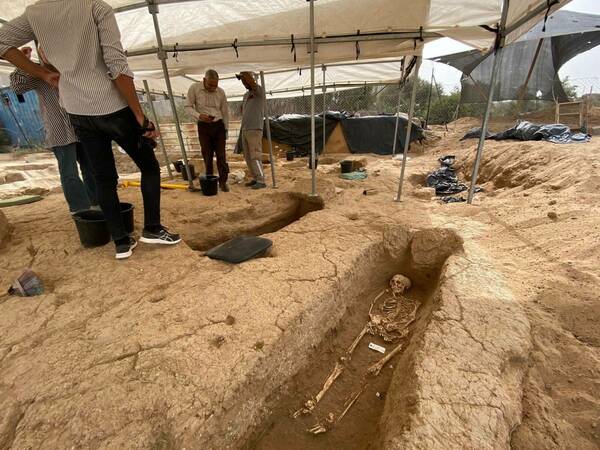In the Gaza Strip, Palestinian workers stumbled upon a significant archaeological site during the construction of a housing project funded by Egypt near Jabaliya in northern Gaza last year. This site has since revealed its historical treasures, with extensive excavation efforts spanning 2,700 square meters (about 2/3 acre) supported by French experts.
What was once an inconspicuous construction zone, surrounded by nondescript apartment buildings, has now transformed into a treasure trove for archaeologists eager to learn more about Gaza's rich history. Gaza, a coastal enclave inhabited by approximately 2.3 million people, has a historical legacy shaped by its position along ancient trade routes between Egypt and the Levant. However, the region's archaeological heritage has faced threats from various factors, including Israeli occupation, a 16-year rule by Hamas, and rapid urban development.

In this context, the initial discovery of 60 graves at the site in January was already a significant find. That number has now grown to 135, marking a major archaeological discovery, according to experts. René Elter, a French archaeologist leading the excavation, reported that over 100 of the graves have already been studied, providing valuable insights into the culture, health conditions, and ailments of the population.
Elter highlighted the lead sarcophagi, one adorned with intricate grape leaf motifs and the other featuring images of dolphins, as exceptional findings. These lead tombs are a first-of-their-kind discovery in Gaza, leading Palestinian archaeologists like Fadel Al-Otul to speculate that they might be the resting places of social elites. Historically, cemeteries were often located near city centers during Roman times.

In addition to the sarcophagi, Elter's team is diligently restoring unearthed skeletons and reconstructing fragments of clay jars. The skeletal remains discovered at the site are slated for further analysis outside of Gaza, with the results returning to the Hamas-led Ministry of Antiquities and Tourism.
Elter stressed the need for a dedicated team to oversee archaeological activities in Gaza, emphasizing that the people of Gaza deserve the opportunity to tell their stories. Gaza holds significant potential for further archaeological discoveries, but given the rapid pace of development, monitoring and preserving these sites present considerable challenges.